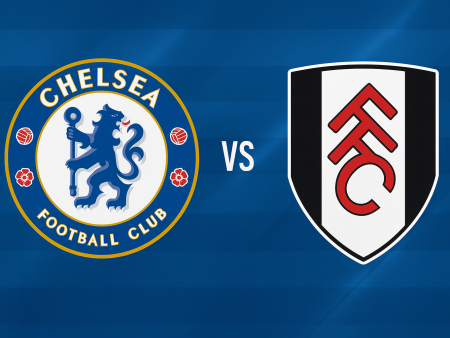Jurgen Klopp’s Liverpool 2021-22: A Comprehensive Tactical Breakdown
With 23 fixtures gone in the Premier League, Liverpool under Jurgen Klopp have emerged as one of the most dynamic teams in Europe, standing shoulder-to-shoulder with title favorites Manchester City. Fueled by a revitalized backline and relentless attack, the Reds have combined rigid tactical discipline with fluid attacking prowess, recording the highest goal tally in the division. This in-depth tactical analysis explores the strategies, formations, strengths, and nuances that have defined Liverpool’s impressive 2021-22 campaign.
Flexible 4-3-3 Formation and Squad Structure
Jurgen Klopp has consistently deployed a 4-3-3 as Liverpool’s primary shape this season, fully utilizing a well-balanced squad. The return of defensive stalwarts Virgil Van Dijk and Joel Matip has solidified the defense, with Alisson Becker providing assurance as a sweeper-keeper behind a high, aggressive backline. Flanking the center-backs, Trent Alexander-Arnold and Andy Robertson serve as two of the most attacking fullbacks in football, frequently pushing high to provide width and overloads.
Versatility extends to midfield as well. Fabinho anchors the central area, often partnering with club captain Jordan Henderson. The third midfield role alternates between players like Naby Keita, Thiago, James Milner, and Alex Oxlade-Chamberlain, depending on tactical needs and fitness.
In attack, the established trio of Mohamed Salah, Sadio Mane, and Roberto Firmino has evolved, with Diogo Jota stepping in as a prolific central forward. Jota’s movement and interplay have been key, creating space for Salah and Mane to cut inside and contribute significantly to the team’s goal output.
Evolving Attacking Structures and Positional Play
While the 4-3-3 defines Liverpool on paper, their formation is highly flexible once in possession. The team frequently morphs into shapes such as 2-3-5, 2-1-4-3, and 3-1-6 when building attacks, reflecting the players' proactive off-ball movement and positional interchanges.
Fabinho’s positioning often determines the structure: he might drop between the center-backs to construct a back three, or push forward to act as the central pivot in front of a defensive pair. Trent Alexander-Arnold may invert centrally, offering additional creative passing angles and facilitating right-sided combinations with Henderson and Salah.
On the opposite side, Andy Robertson overlaps regularly, working in tandem with the left-sided midfielder and winger to stretch defenses and deliver incisive balls into the box. These dynamic wide options force opponents to constantly adapt, opening channels for Liverpool’s attackers to exploit.
Ball Progression: Build-up Patterns and Transitions
Liverpool's build-up play is characterized by composure and adaptability. They are adept at circulating the ball across the backline, with Van Dijk and Matip comfortable stepping forward to initiate attacks. Alisson, renowned for his distribution, can launch direct passes to break presses or kick-start rapid counters.
In midfield, the interplay between Fabinho, Henderson, and their supporting partner is crucial. Typically, the third midfielder positions higher up, allowing Fabinho and Henderson to control the tempo and direction of play. The right flank is particularly favoured for progression, with trademark patterns involving Henderson dropping to receive, creating space for Alexander-Arnold and Salah to combine or make diagonal runs.
Liverpool’s ability to switch play is another standout trait. Quick diagonals from the likes of Fabinho, Henderson, or the fullbacks shift the focus of attack, destabilizing defensive blocks that overcommit to one side.
Relentless and Versatile Attacking Threat
Liverpool lead the Premier League in a host of offensive categories, including total goals (58 after 22 matches), expected goals, and shots on target per 90 minutes. These statistics underscore the collective power of their front three, supported by creative defenders and midfielders.
As a team, they expertly manipulate defensive shapes through positional rotation and fluid movement:
- Wingers regularly drift into half-spaces, combining with midfielders and fullbacks.
- Fullbacks interchange and overlap to pull defenders wide, opening lanes in central areas.
- The “false nine”-often Jota-drops deeper, inviting Salah or Mane to attack more centrally.
The narrowness of the front three during creative phases compresses the opposition, increasing the width available for overlapping players to exploit. Additionally, Liverpool’s rapid transitions and direct, vertical attacks allow them to capitalize on defensive disorganization. The blend of sharp finishing, intelligent running, and powerful dribbling by players like Salah and Mane makes the Reds exceptionally difficult to contain.
Set-pieces represent another weapon in Liverpool’s arsenal, with routines orchestrated by the likes of Alexander-Arnold and Robertson. The team ranks among Europe’s best for goals scored from corners and free-kicks, with aerial threats like Van Dijk frequently targeted.
Defensive Organization and Gegenpressing
Klopp’s philosophy has always emphasized aggressive pressing, and this season Liverpool have led the league in pressing metrics such as successful presses and pressures in the attacking third. The team maintains a high defensive line, compressing space and applying pressure intelligently rather than simply chasing the ball at all times.
Liverpool’s counter-press-where multiple players converge immediately after losing possession-has proven vital in regaining the ball swiftly. The structure adapts as required: the forwards may drop to form compact 4-1-4-1 or 4-5-1 blocks, bolstering central areas and limiting opposition progress.
At set-pieces and throw-ins, Liverpool’s organization has shone through, with detailed routines preventing the majority of aerial and second-ball threats. The presence of dominant aerial defenders, combined with the pace of fullbacks to recover in transition, enables Liverpool to mitigate common vulnerabilities seen in high-line teams.
Statistically, Liverpool boast one of the best defensive records in the league. The organizational skills of Alisson and Van Dijk, both leaders from the back, have ensured continued clarity and focus during opposition attacks.
Summary: A Team at Their Peak
Liverpool's tactical evolution under Jurgen Klopp has elevated them into one of Europe's premier football machines. With an incisive attack, versatile formations, and a robust defensive structure, the Reds have consistently performed across all statistical and tactical dimensions. Players such as Mohamed Salah-leading the league in combined goals and assists-Trent Alexander-Arnold-outstanding in creation and delivery-and Diogo Jota-delivering consistent goal returns-underscore the side’s balance between creativity and efficiency.
Although Manchester City remain strong contenders for the league title, Liverpool’s blend of discipline, invention, and collective belief ensures they are perennial threats on all fronts. The coming months will determine whether this crop of players can add another chapter to the club’s storied legacy before the natural cycle of squad rebuilding sets in.
Further Reading & Tactical Resources
For more in-depth football analysis, explore these related topics:
- Klopp’s Liverpool: Tactical Trends of Previous Seasons
- Where Liverpool’s 2020-21 Campaign Struggled-Lessons Learned
- Countering Liverpool: Tactical Successes of Rival Teams
- Spotlight on Player Evolution: Successors for Salah, Mane, and Firmino
Stay tuned for continued updates on tactical innovations, player scouting, and coaching methodologies from around the world of football.













